On the way to Express Bus Terminal for a late-afternoon departure, I ran into a former law-firm colleague named Jang Du-Hyun. We had only a minute to talk. He knew about my many travels and thus was not surprised to learn that I was going to a trio of small towns in Gyeongsangbuk Province.
I would see next to nothing on the first day of this three-day excursion. I arrived in Daegu about 8 p.m. and got on Line 3 (which opened in 2015, six years after I left for Seoul) of the subway. A taxi took me to a street with an uncanny resemblance to one from my past. The long-shuttered hagwon (Chilgok LIKE School) where I taught English to kids both adorable and detestable in late 2007 and early 2008 had been in one of those 5-story buildings across the way. I stood and looked, as 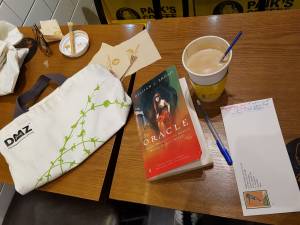 memories flooded through my brain. Enough sentimentalizing, because it was late and I had to find a hotel. I did, in a raucous area chock full of bars, noraebangs (singing rooms) and restaurants. My evening meal was a pepperoni pizza, consumed at the hotel while I read a few pages of William J. Broad’s The Oracle / Ancient Delphi and the Science Behind Its Lost Secrets.
memories flooded through my brain. Enough sentimentalizing, because it was late and I had to find a hotel. I did, in a raucous area chock full of bars, noraebangs (singing rooms) and restaurants. My evening meal was a pepperoni pizza, consumed at the hotel while I read a few pages of William J. Broad’s The Oracle / Ancient Delphi and the Science Behind Its Lost Secrets.
I woke up on Sunday morning to the sound of rain. A cheap umbrella was purchased at a nearby 7-11, and the young woman there kindly gave me directions to the nearest bus stop. I had to go to Waegwan, just a few kilometers north. The names “Chilgok” and “Waegwan” are redolent with meaning to people who lived through the Korean War. They sit at the northwest corner of what was the 160 × 80-kilometer Busan Perimeter. How perilous were things five weeks after the North Koreans came rushing over the border on June 25, 1950? The Republic of Korea was in real danger of obliteration. The South Koreans and their allies (primarily the Americans) were buying time and trying to retreat as slowly as possible. The North Korean flag, the Ramhongsaek Konghwagukgi, flew over Seoul, Daejeon and 90% of the country.
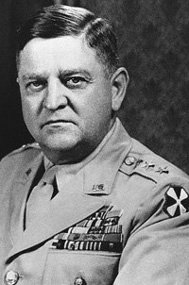 Inside the Busan Perimeter, U.S. General Walton Walker issued his famous “Stand or Die” ultimatum to soldiers under his command. An abbreviated version: “There will be no more retreating, withdrawal or readjustment of the lines or any other term you choose. There is no line behind us to which we can retreat.… There will be no Dunkirk, there will be no Bataan. A retreat to Busan would be one of the greatest butcheries in history. We must fight until the end…. If some of us must die, we will die fighting together.” And so they did, in a blood-drenched 55-day battle—in fact, a whole series of battles—that saw the North Koreans repulsed and forced to start their own retreat, compounded by the landing of American forces at Incheon on September 15.
Inside the Busan Perimeter, U.S. General Walton Walker issued his famous “Stand or Die” ultimatum to soldiers under his command. An abbreviated version: “There will be no more retreating, withdrawal or readjustment of the lines or any other term you choose. There is no line behind us to which we can retreat.… There will be no Dunkirk, there will be no Bataan. A retreat to Busan would be one of the greatest butcheries in history. We must fight until the end…. If some of us must die, we will die fighting together.” And so they did, in a blood-drenched 55-day battle—in fact, a whole series of battles—that saw the North Koreans repulsed and forced to start their own retreat, compounded by the landing of American forces at Incheon on September 15.
After getting a hotel room in Waegwan, I rode a bus to the Chilgok Patriots & Peace Memorial. I toured the place, of course. When I expressed interest in a poster commemorating those events, a Mongolian-born female worker named Hulan pulled it down and gave it to me. She said that Hill 303 sat just behind the museum, and I tried my best to find it but failed. Hill 303 was the site of one of the war’s most notorious incidents—where North Korean soldiers bound and shot 42 American POWs. I also took a long walk on the west side of the Nakdong River to the railroad bridge, a section of which had been blown up in a desperate maneuver to halt the incursion of North Korean fighters. Many innocent South Korean refugees died along with them.
Incongruous as it sounds, directly adjacent to the Chilgok Patriots & Peace Memorial was a museum devoted to bees and the honey-making process. I certainly would not have sought out such a place, but there it was. I went on in and learned a lot about melittology (the field of science devoted to bees). Honeybees have a well-earned reputation for diligence—foraging, taking care of the queen, making hexagonal honeycombs and cranking out that golden, sweet-tasting concoction. I bet you knew that beekeeping in Korea began about 2,000 years ago, during the reign of King Dongmyeong of the Goguryeo dynasty. Chilgok hosts an annual honeybee festival that draws about 100,000 tourists.
A lady at the K-Water office next to the Nakdong called a taxi for me. In the remainder of the day, I had four memorable experiences. First, I ate lunch in an Uzbekistan restaurant near the bus terminal. Both walls featured posters of a large mosque from back home. I trust the food was prepared in halal fashion. Second, I went into a vaping shop. My decision was undoubtedly prompted by having recently written an article entitled “Smoking and Vaping in Korea.” The proprietor was a very friendly guy who wore a 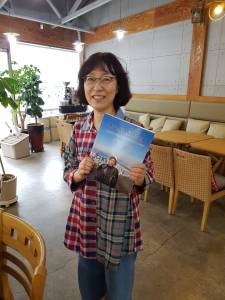 cowboy hat and brandished a toy gun. He took a deep draw on his e-cigarette and let out a gigantic plume of white smoke. Third, with an election coming up, a candidate for political office was on the sidewalk campaigning. I took one of his cards and had a brief talk with him. Finally, I encountered a woman named Kim Jeong-Ae at her coffee shop, Café Lobby. Since it featured a library of sorts, I signed and donated a copy of A Seoul Miscellany.
cowboy hat and brandished a toy gun. He took a deep draw on his e-cigarette and let out a gigantic plume of white smoke. Third, with an election coming up, a candidate for political office was on the sidewalk campaigning. I took one of his cards and had a brief talk with him. Finally, I encountered a woman named Kim Jeong-Ae at her coffee shop, Café Lobby. Since it featured a library of sorts, I signed and donated a copy of A Seoul Miscellany.
It was more rain the next morning. With the help of a different coffee shop owner, I made a deal with a taxi driver to take me a few kilometers southwest to Seongju. My purpose was again dictated by the North Koreans with their missiles, rockets and nukes. Seongju—more specifically a former golf course north of town—is the site of the Terminal High-Altitude Area Defense (THAAD), a $1 billion defensive military system that became operational about a year ago. Created by Lockheed Martin, THAAD was proposed to—some say “foisted on”—the South Korean government by the USA. The North Koreans, as one might expect, do not like this. Nor do the Chinese and Russians. Although its anti-ballistic capabilities are proven, not all South Koreans want it there either. Protests against implementation of THAAD in Seongju have been many and vociferous. I was not sure what I would see, but I had to go and take a look.
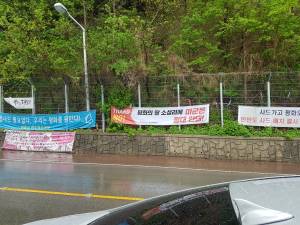 I peppered the taxi driver, a crusty old guy, with questions via my girlfriend on the phone. He favored THAAD and spoke with gratitude about the Americans. Although I did not see any protesters, they had certainly been there. Banners on both sides of the road made clear, in words and visual depictions, that it was wrongheaded and ought to be dismantled and shipped back to the USA posthaste. Army buses were lined up, and young Korean soldiers in black uniforms and bright green vests stood huddled together in the light rain. A couple of them approached the taxi and said we had gone as far as allowed. Both spoke decent English, so I was able to talk with them. I gave them a shake and stated my support for the work they did.
I peppered the taxi driver, a crusty old guy, with questions via my girlfriend on the phone. He favored THAAD and spoke with gratitude about the Americans. Although I did not see any protesters, they had certainly been there. Banners on both sides of the road made clear, in words and visual depictions, that it was wrongheaded and ought to be dismantled and shipped back to the USA posthaste. Army buses were lined up, and young Korean soldiers in black uniforms and bright green vests stood huddled together in the light rain. A couple of them approached the taxi and said we had gone as far as allowed. Both spoke decent English, so I was able to talk with them. I gave them a shake and stated my support for the work they did.
The taxi driver executed a 180-degree turn, and we headed back to the Seongju bus terminal. As we drove along, I reflected on the issue. THAAD is a raging controversy, as evidenced by all those banners and the army guys enforcing governmental policy. A former golf course is now given over to anti-ballistic rocket launchers because of our belligerent northern neighbors. Citizens of the DPRK do not have a fraction of the free speech we have here. Wouldn’t they love to do some protesting of their own?
After a bus returned me to Waegwan, I checked out of the hotel and went to the train station. No KTX this time, but an old-fashioned train. It’s cheaper, yes, but also slower and less stable. It rocks back and forth on the tracks. At any rate, I was home by 3 p.m. That gave me enough time to review the 30 or so photos I had taken and start writing this piece.

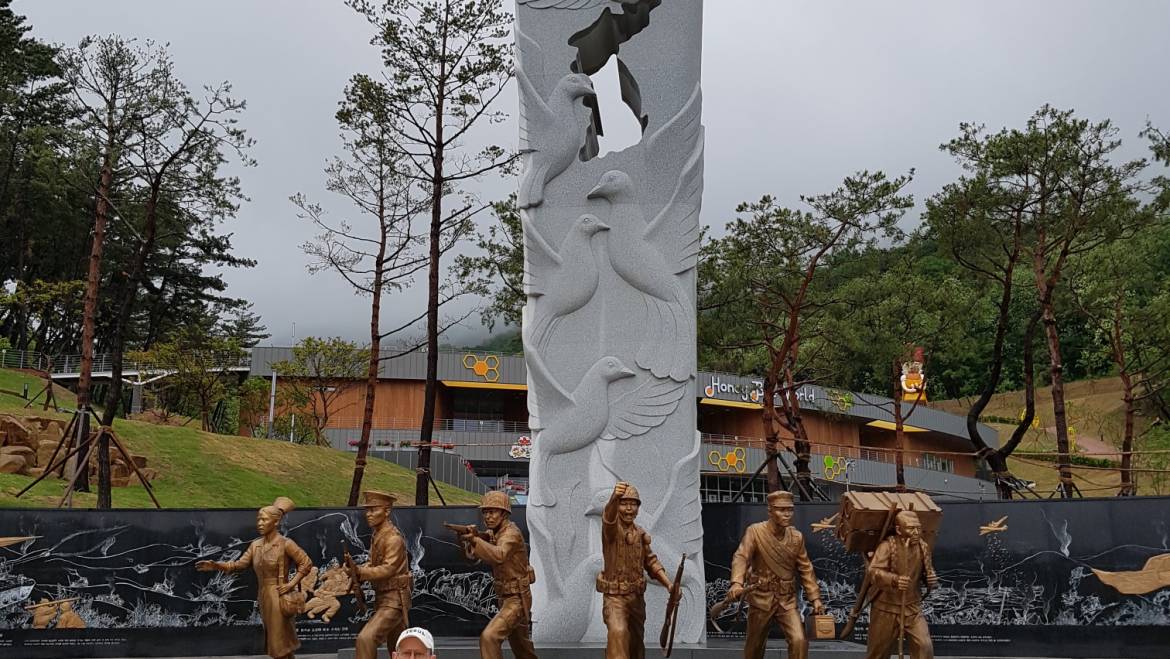
14 Comments
You have seen and done more in Korea than a lot of Koreans I know (me included haha). I wonder what you think of THAAD? You mention both sides but I didn’t feel your own opinion in it.
Hi and thanks for your response. It’s probably true that I have seen more of this country than 99% of the natives over the last 10 1/2 years. That does not mean I am an expert, however. I realize that I am still just a foreigner in Korea. I am honestly trying to understand the THAAD issue.
Richard, another exceptional portrayal of Korea and its history. You can make anyone fall in love with a country and its people. You are covering every square inch of that part of the world and showing it to us. Thank you. But thank you especially for your love of history.
My dear Ms. Brooks, thank you very much for your kind words. What you say here is exactly what I strive to do, to show Korea to outsiders and even to the natives themselves (from a different perspective).
As you traveled to those two resion, it seems that you are very interested in Korean politics.
U.S. has played not only a positive role but also a negative role to peace in Korean penninsula.
As Korean War had finished with Panmunjeom Declare, Now Korean people has set one step into peace with its willing!
Thank you for your activity
Dong-Il, I am interested in Korean history first and foremost. I do not consider myself any kind of expert in the politics of this country. It’s very confusing, to be honest with you.
Hi Richard ,
I am always glad to read your blog where I can see many beautiful things about this country where you live now. I think for you Korea is ,,home,, now, even if you are an American. I am very glad to get involved and write about the culture of this country and have many books explaining the history and culture of this country and also about your travels.
I’m proud of a friend like you Richard!
Elly
Elly, what a kind thing for you to do, reading my blog about Korea. You are in Romania, a very different country. I hope I can give you just a glimpse of what life is like here. That’s all I seek to do.
You should come back to Texas and tell us what is going on here! Great article, especially considering you aren’t fluent in Korean.
I know, Kenny. To my everlasting shame, I am still far from mastering the local language. But I seem to cope. I make up for that with my genuine interest in Korean history and culture.
You’re amazing “boots on the ground” perspectives help a lot. So much discord when it comes to news as to what is an accurate portrayal of facts you know and you dis-spell that aspect with your tenacious reporting.
Mr. Scoggins, I thank you sincerely for having read and commented on this story. I left out a lot of detail about taxis and buses and struggling to get from here to there. People don’t want to hear too much about such mundane things, understandably.
What an interesting article! I did not know about THAAD. I don’t understand why it would be protested a lot given there is an a totalitarian, aggressive country to the north with nuclear tipped ballistic missiles. And thanks for adding to my vocabulary, melittology.
Kevin, I guess THAAD doesn’t get much attention in the American media. Big deal here. But I agree with your point. I surmise that we have lived with that idiotic “government” north of the border for so long, we are complacent to some degree.
Add Comment